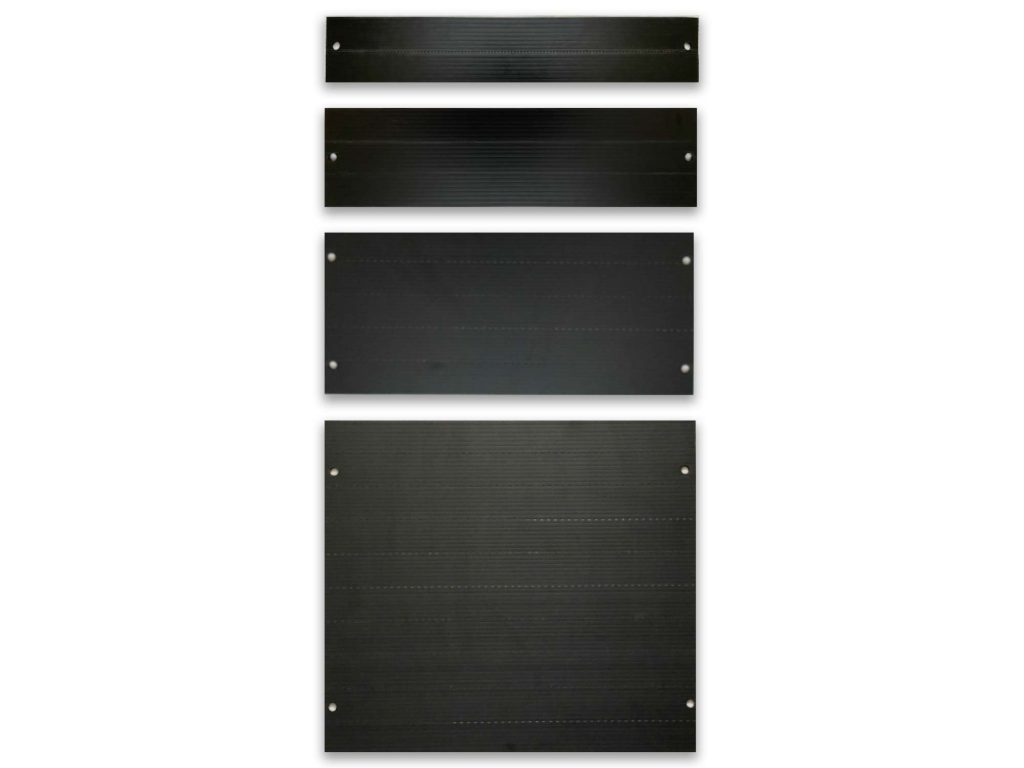Should You Fill Rack Blanking Panels?

Should You Fill Rack Blanking Panels?
Blanking panels in a data center, also known as closeout filler panels, offer coverage to unused rack space directly in front of a rack, so more airflow can get to the technology and equipment. These panels lessen the hot air flow within the rack, resulting in improved performance, and because of this, blanking panels are considered to be a best practice when it comes to design in data center facilities. They are essential in facilitating hot/cold aisle containment systems.
Containment, Panels, And Hot/Cold Separation
Did you know that the most effective way to utilize cooling air in a data center is to have only move through the IT equipment once? The general rule is that if air passes through the data center equipment, or any kind of similar equipment for that matter, twice, then the subsequent piece of equipment is treated with preheated air. Like Wonder Woman spinning out, internal fans spin fast in order to support internal temperatures. Because of this, more heat is generated, which must be eradicated from the system. And yet if air diverts the hardware, the air is squandered and must return to the cooling system, which in turn lowers the return temp. This return air temperature proves to be crucial to the process, as the cooling coil capacity is directly related to it and equates to a lower cooling capacity for the unit.

Just as wearing face masks to contain the spread of disease have become a growing trend, so have containment aisle systems. They soon could be considered a best operation like blanking panels and hot/cold aisle systems. As mentioned before, what containment does is separate the air pathways to and from the rack, and it is often completed at the rack or aisle level, on the hot or cold side. However, blanking panels are imperative to the containment process, as the air should never be allowed to recycle through the racks. Blanking panels and containment work together to achieve an energy savings of more than 20 percent when it comes to containment systems.
Blanking panels can independently enable the rack enclosure to properly cool without containment. In the IT operations, there are fans that make a front section or crater with pressure that is lower than outside the rack, which pushes the air through the front punctured door. In addition, a similar occurrence takes place in a back cavity that pushes the air out through the back perforations. Without isolating the unused spaces, it is a challenge to build up the stresses necessary to pull air in or push it out.
What’s The Best Panel Material?
Plastic or metal panels? That might be a question on your mind when it comes to selecting the right material. When it comes to cooling, there’s no right or wrong kind of panel, since the only thing you need to worry about is whether they cover the open rack unit space and limit the hot air from recycling to the front of the rack. However, some materials offer advantages.

Plastic panels are lightweight and require no tools, for a quick-snap function to square-hole racks and easy accessibility. On the other hand, the steel panels are sturdier for more durability and strength, and offer more versatility when it comes to square, round, and threaded rack hole options.
Why Blanking Panels?
One of the biggest reasons for using blanking panels is when you look at the rack-level power usage when the panels are not in use. A Computational Fluid Dynamics (CFD) model shows that without the blanking panels, the air recirculates, resulting in increased energy usage and reduced efficiency.
If your facility doesn’t use rackfill blanking panels, this could result in the facility being forced to function at lower temperatures, which could cause a spike in energy that could easily be avoided with the use of said panels.
Bottom Line
Blanking panels in data centers have proven to be more than just a trend, as their sustainability, cost-efficiency, and function help these facilities operate at the top of their game. There are many things to consider when it comes to selecting blanking panels for your system, but the pros outweigh the cons. Yes, blanking panels might take a little time and energy to install, especially with the metal panels that require some assembly, but the installation and effort is worth it in the end, as it’s a sound investment for your data center facility. In order to maintain the quality of a rack or cooling system and protect the IT equipment, helping it operate properly, blanking panels are essential. They are the most cost-efficient way to keep your data centers and containment aisles functioning and working. As any cooling professional and they will tell you that blanking panels are the way to go.

